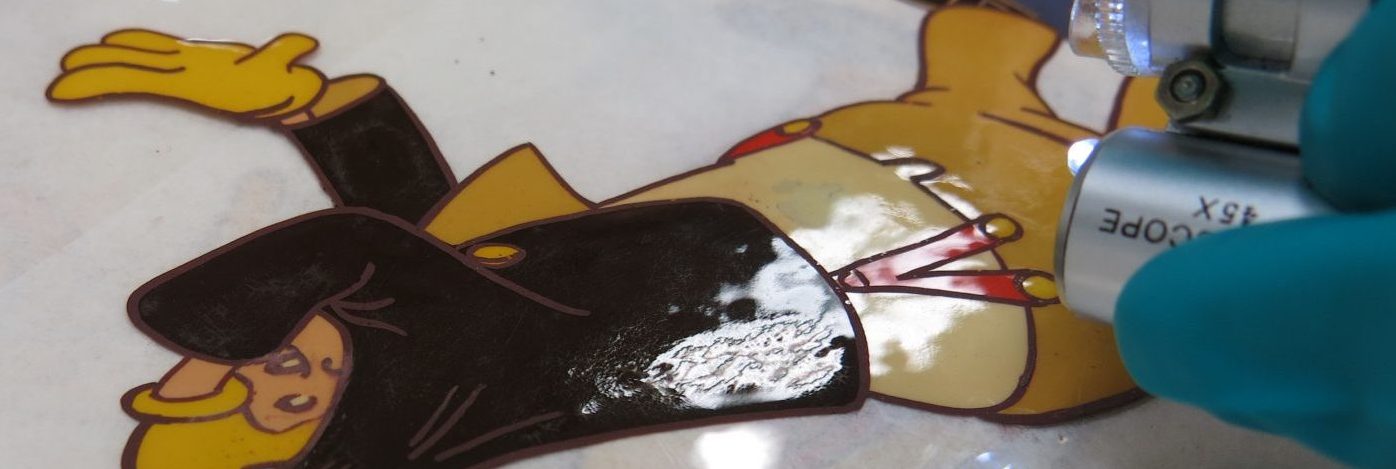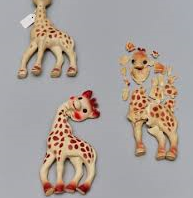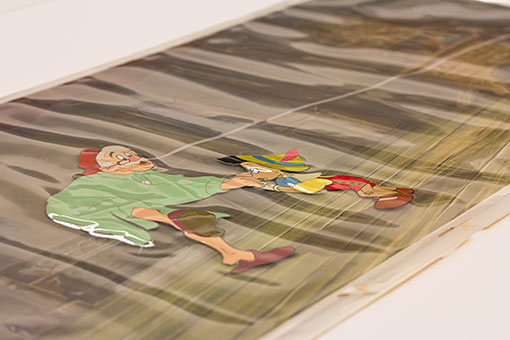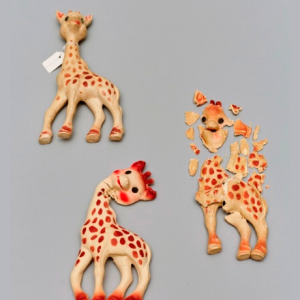Society for Animation Studies
An international organization dedicated to the study of animation history, theory and practice. It was founded in 1987. Each year, the SAS holds an annual conference at locations throughout the world, where members present their recent research. Animation Studies is the SAS’ peer-reviewed journal.
Disney Animation Cels
Getty Conservation Institute and Disney Animation Research Library collaborative research project. A collection of original plastic animation cels and backgrounds will be studied to better understand the changes that occur in these materials over time, and the possible causes of these changes, with the ultimate aim of improving ways of preserving not only Disney’s animation cels, but also any object made from the same types of plastic.
IDENTIFICATION OF PLASTICS OUTSIDE THE LAB
Plastics in museum collections need special care. They often show problems during storage and exhibition, such as discolouration, efflorescence, tackiness and crumbling. To anticipate problems and preserve plastic containing objects under appropriate conditions, identification of the plastics is crucial. This online Plastic Identification Tool helps identify plastics in artworks, or at least traces them to main groups of plastics. For the best identification result, this tool is accompanied by a workshop and a set of boxes with different plastics; the PIT kit.
Preservation of Plastic Artefacts in Museum Collections
Due to their remarkable properties plastics have been used as an alternative to natural products and have allowed new applications that would have never been possible before. Plastics are today everywhere in our daily life; it is difficult to imagine a life without plastics whether it is our polyethylene carrier bags used to bring shopping home from the supermarket, poly(vinyl chloride) (PVC) waterproof clothing to protect us from the weather, polycarbonate compact discs and DVDs to store our favourite music and pictures or the acrylonitrile butadiene styrene (ABS) building bricks our children play with. Because plastic reflects daily life since the early 1900s and contemporary art since the 1960s, museums and galleries all over the world have growing collections of it. But any new discovery has its dark side, its weaknesses: plastics are not an exception and the downside is all about permanence.






Spelling error report
The following text will be sent to our editors: